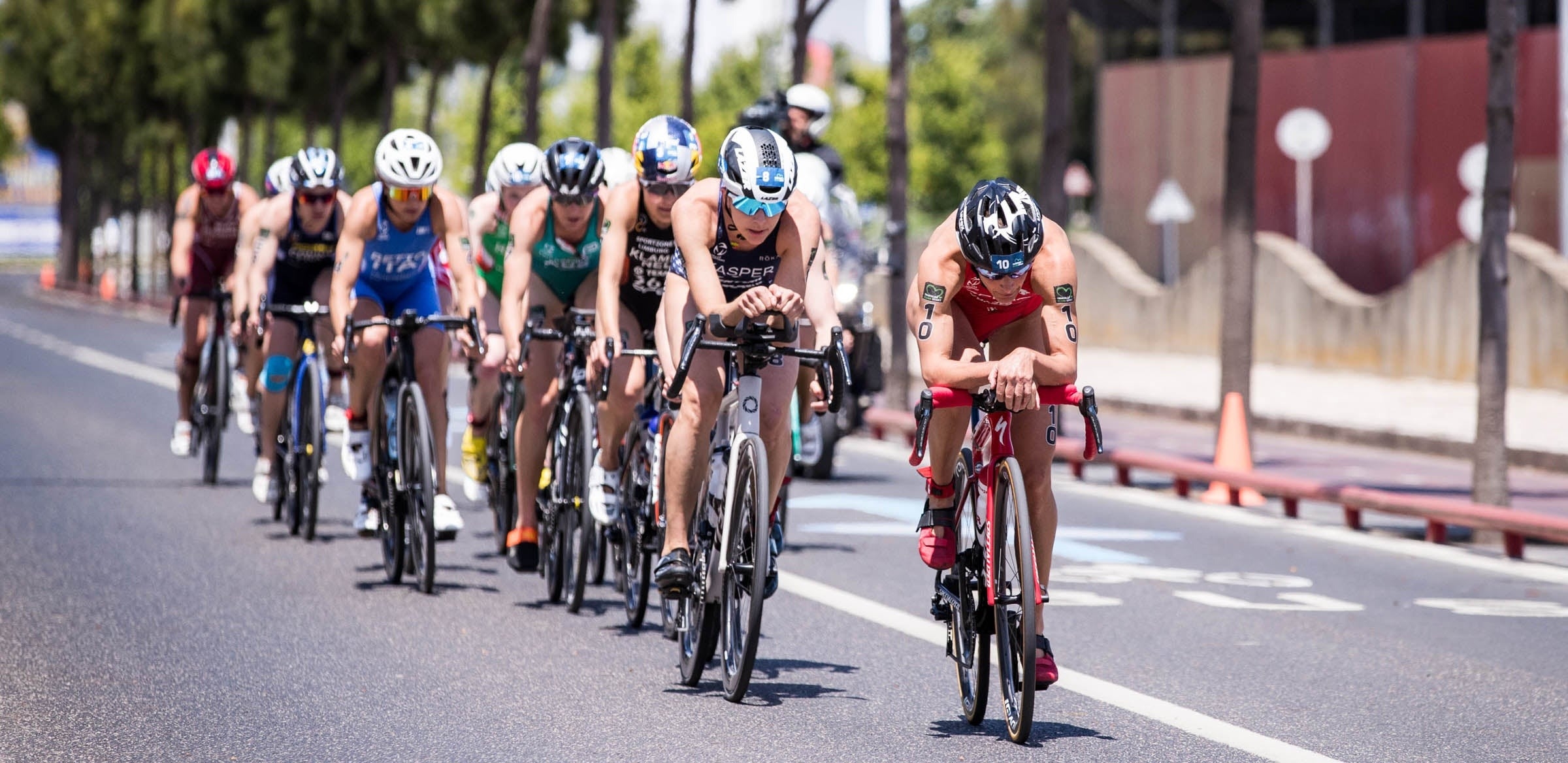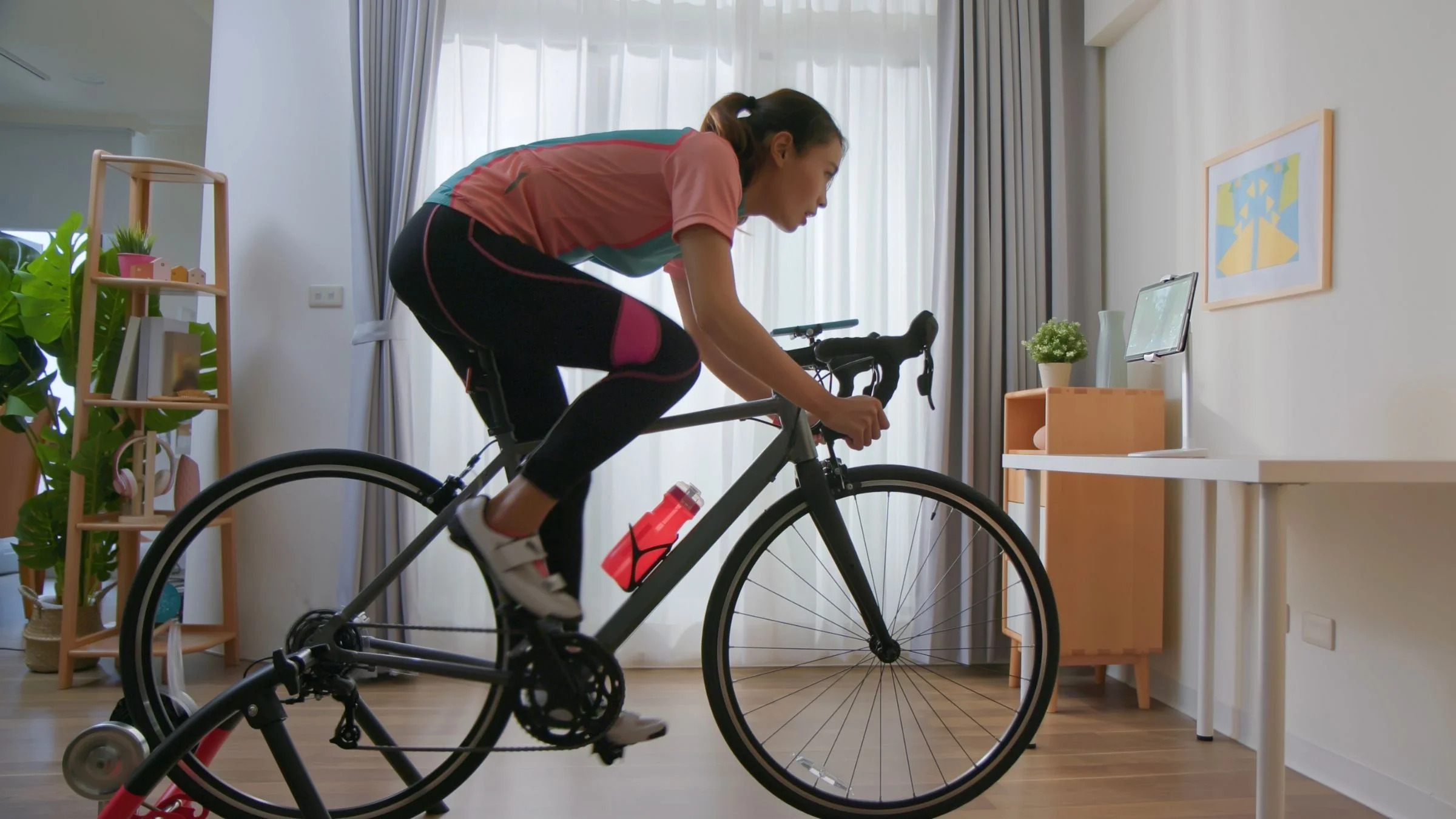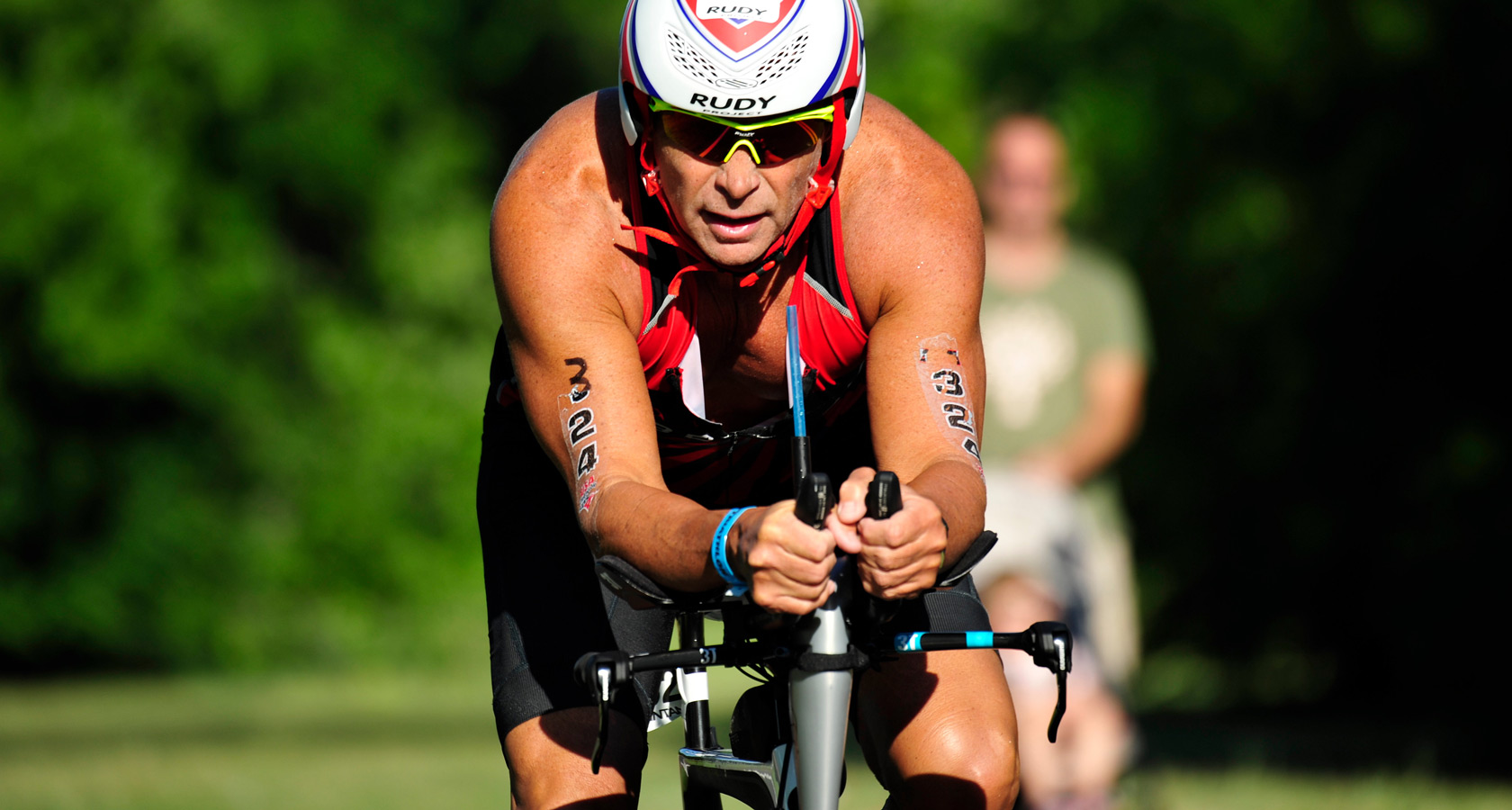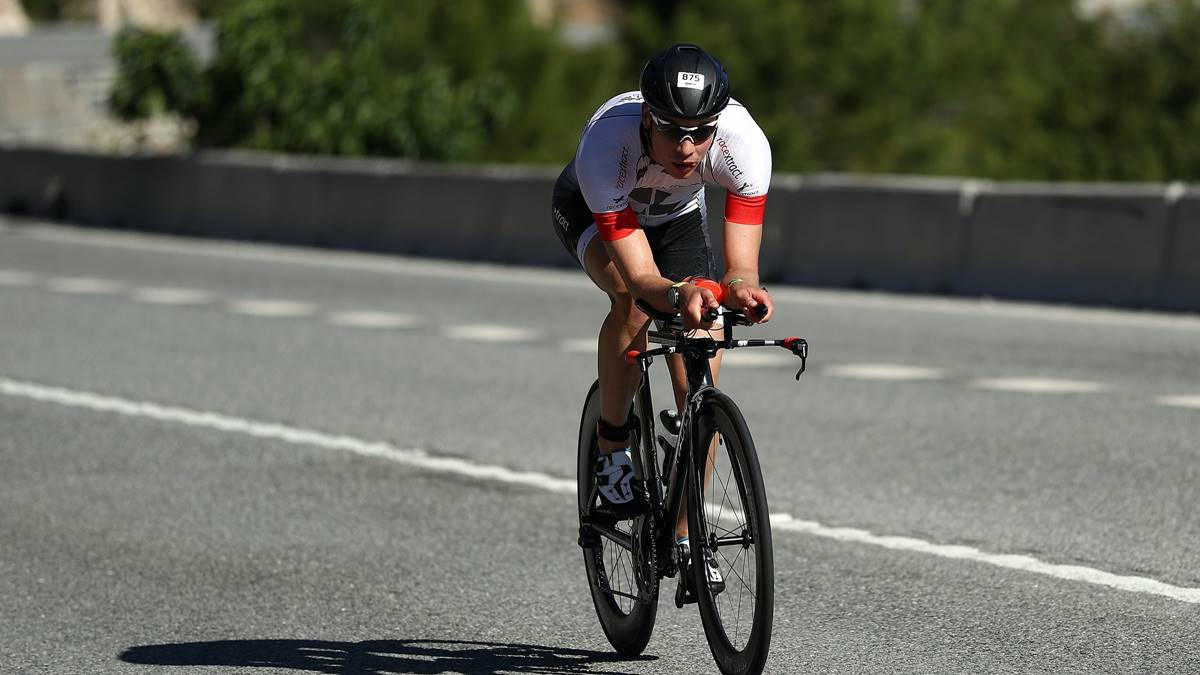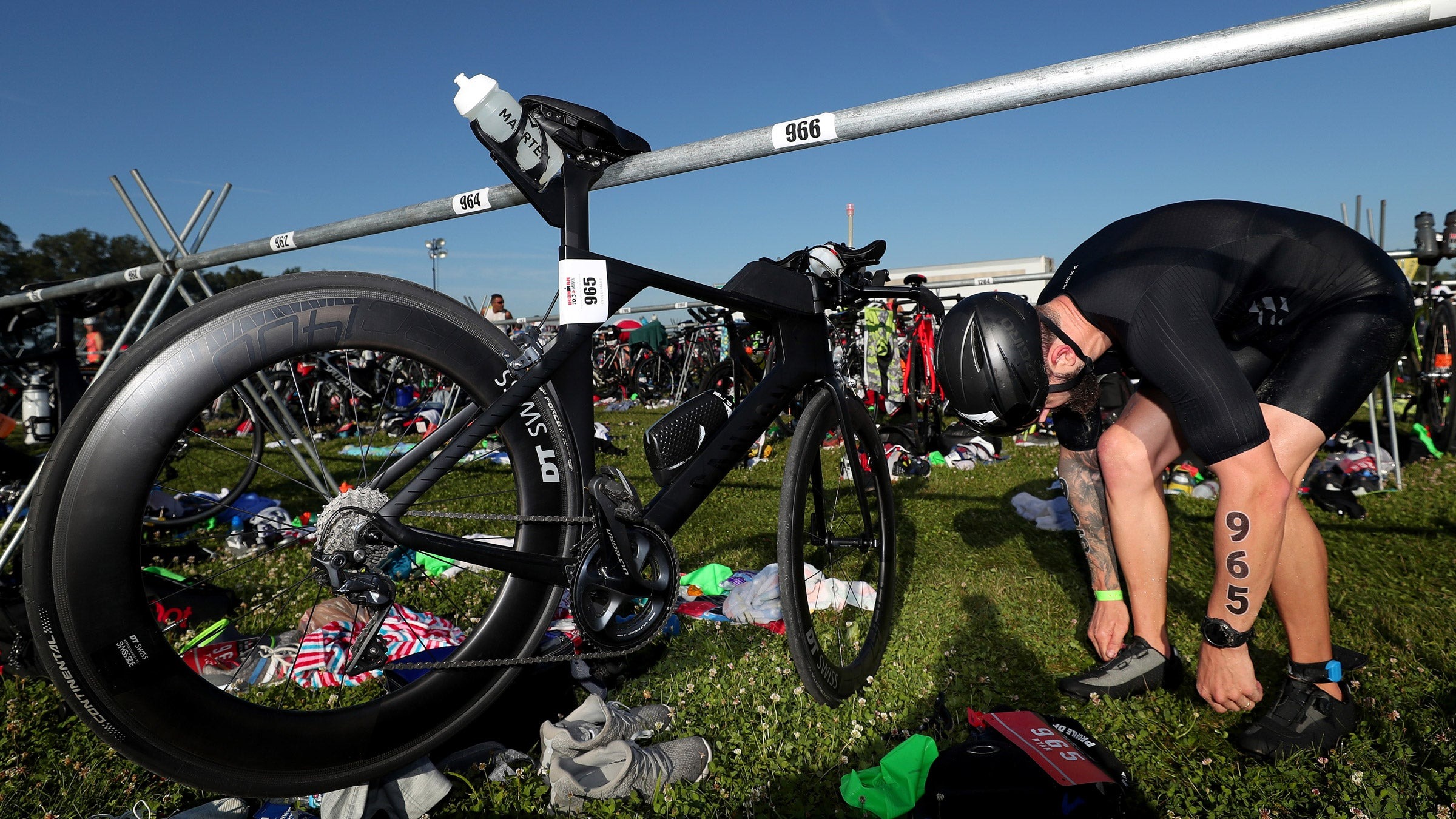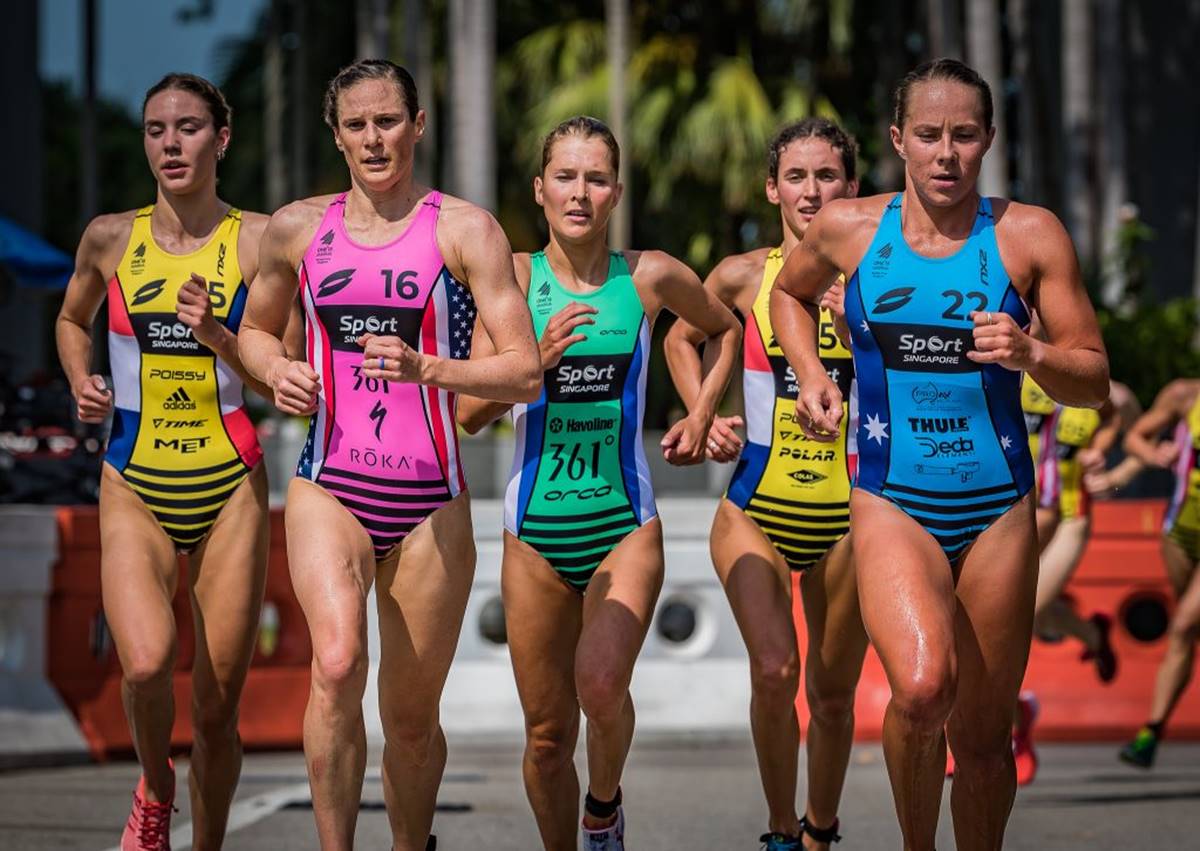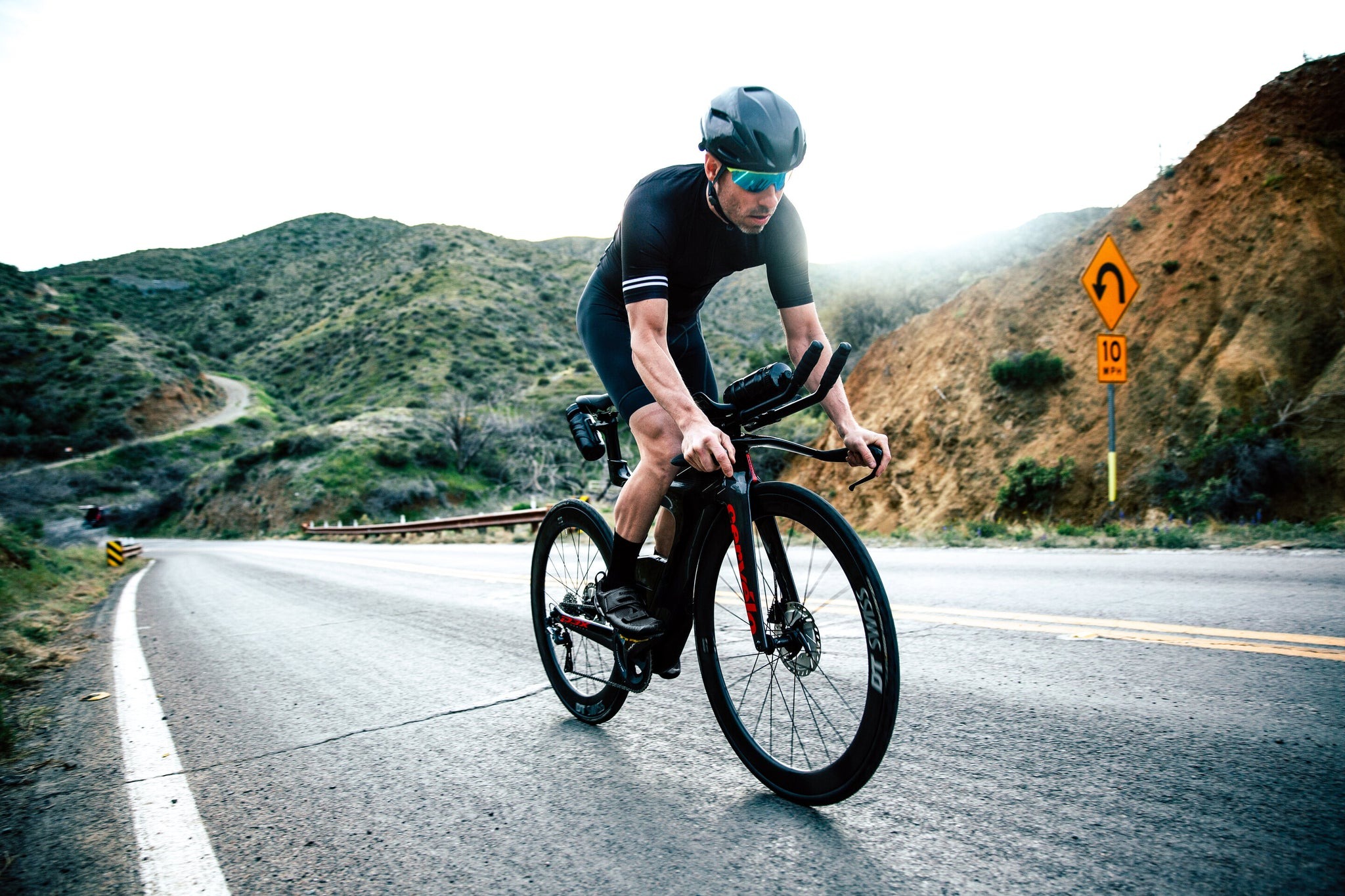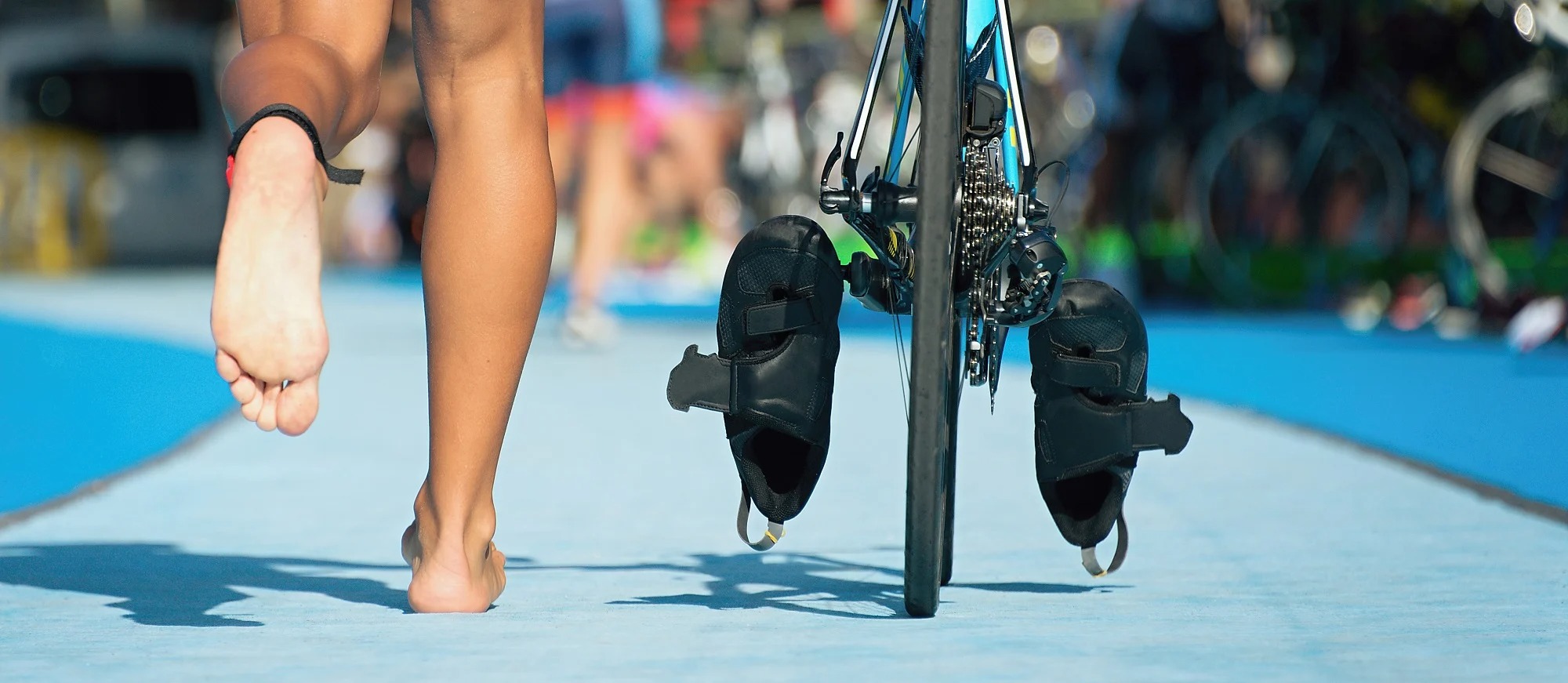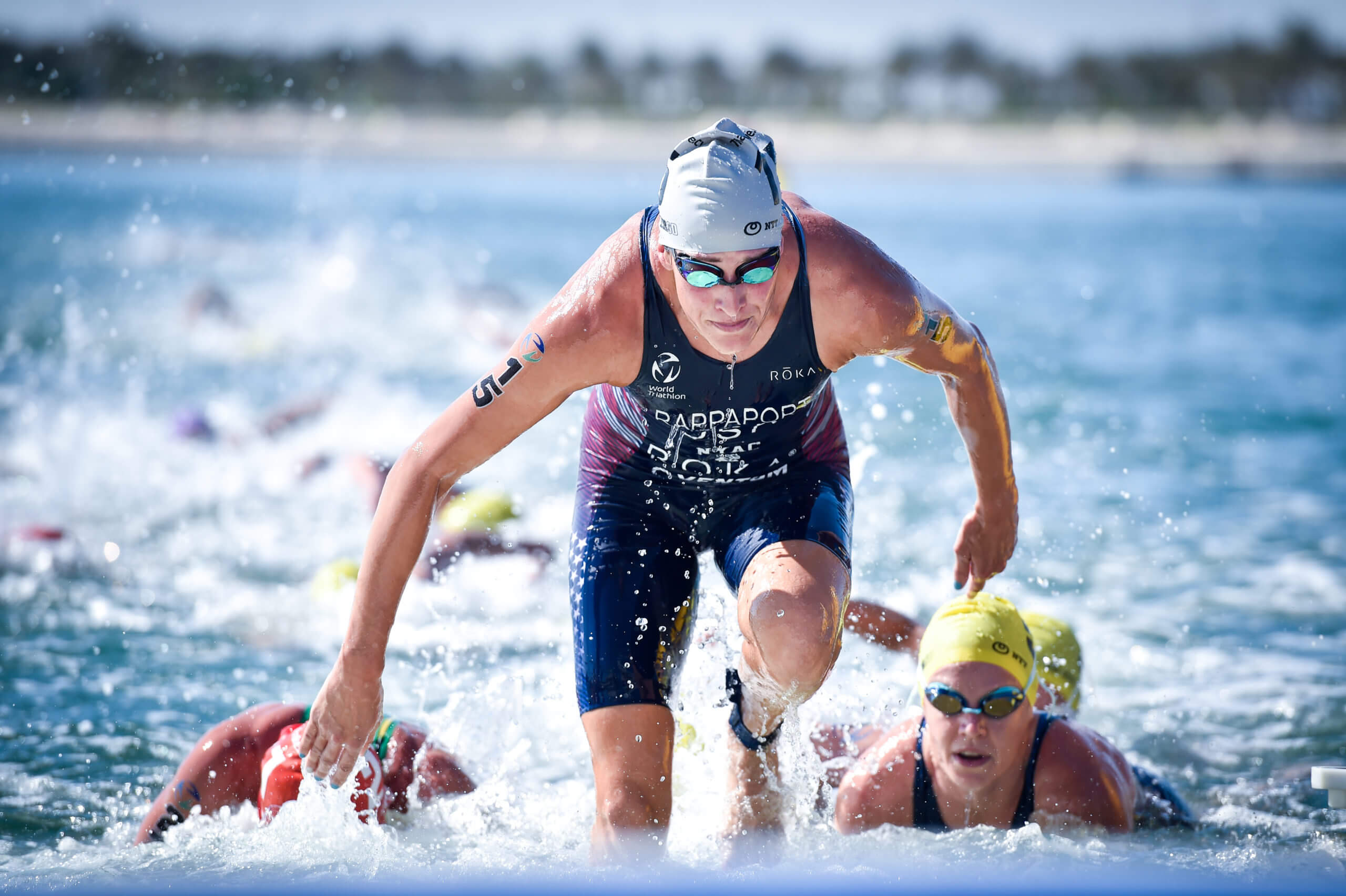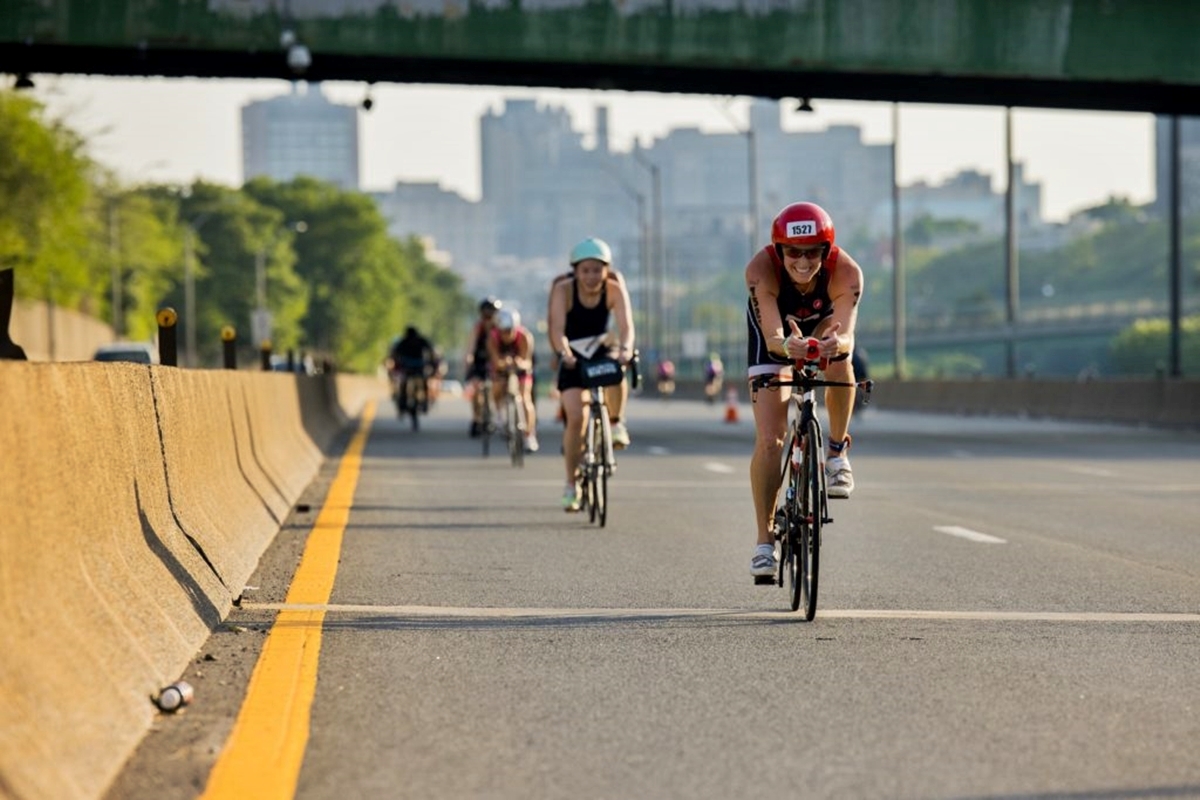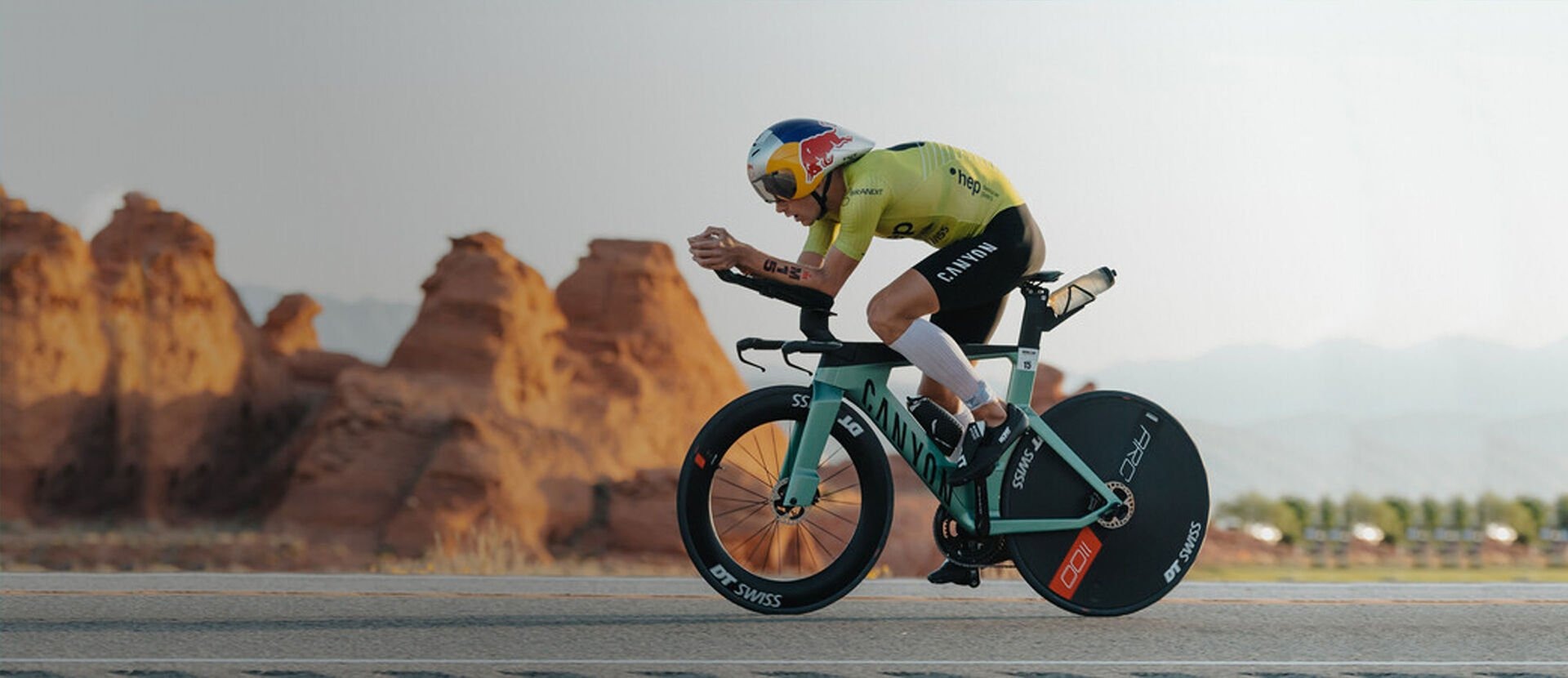

Featured
How Fast Do Triathlon Bikes Go
Modified: August 21, 2023
Discover how fast Featured triathlon bikes go and how they can help you achieve your best performance. Explore the top speeds and benefits of these specialized bikes.
Introduction
Welcome to the exhilarating world of triathlon biking! Triathlon is a multisport endurance event that consists of swimming, biking, and running. In this demanding sport, every second counts, and the speed at which you can navigate the cycling course plays a crucial role in determining your overall performance.
Triathlon bikes are specifically designed to maximize speed and efficiency, allowing athletes to cover long distances with minimal effort. These bikes are built with advanced aerodynamics, lightweight materials, and specialized components to optimize performance and reduce drag.
In this article, we will explore the various factors that influence the speed of triathlon bikes. From aerodynamics and gear ratios to power output and terrain, we will delve into the key elements that can help you achieve faster bike speeds.
Whether you’re a novice triathlete looking to improve your bike performance or a seasoned competitor seeking that extra edge, understanding the mechanics behind triathlon bike speed is essential. So, let’s dive in and discover how fast these bikes can go and what factors impact their top speeds.
Factors Affecting Speed in Triathlon Bikes
When it comes to achieving high speeds on a triathlon bike, there are several factors that come into play. Let’s take a closer look at these factors and understand how they influence the overall speed of the bike.
- Aerodynamics: One of the primary factors that impact bike speed in triathlons is aerodynamics. Triathlon bikes are designed with streamlined frames, integrated handlebars, and aero wheels to reduce wind resistance. The more aerodynamic the bike, the less drag it encounters, allowing you to slice through the air with greater ease and efficiency.
- Gear Ratios: The gear ratios on a triathlon bike determine the range of speeds and the ease with which you can pedal. With a wider range of gears, you can find the optimal gear ratio for different terrains and riding conditions. This allows you to maintain a consistent cadence and maximize your power output.
- Power Output: The amount of power you can generate while pedaling directly affects your bike speed. Power output is a combination of your strength, pedaling technique, and cardiovascular fitness. Through training and conditioning, you can increase your power output, enabling you to generate more speed on the bike.
- The Role of Terrain: The type of terrain you encounter during a triathlon will impact your bike speed. Flat and smooth surfaces provide optimal conditions for maintaining high speeds, while uphill climbs and rough roads can slow you down. Understanding how to adjust your cycling technique and gear ratios based on the terrain is crucial for maintaining speed and conserving energy.
- Training and Technique: Proper training and technique play a significant role in enhancing your bike speed. Regular cycling workouts, focused on intervals and endurance, can improve your cardiovascular fitness and muscular endurance. Additionally, mastering proper cycling techniques, such as efficient pedaling mechanics and body positioning, can help you maximize your speed and efficiency.
By considering these factors and optimizing each aspect, you can significantly improve your performance and achieve faster bike speeds in triathlon events. It’s important to note that finding the right balance between all these elements is key to maximizing your speed without compromising endurance.
Now that we have explored the key factors affecting triathlon bike speed, let’s take a closer look at the role of aerodynamics and how it can contribute to achieving higher speeds on the bike.
Aerodynamics in Triathlon Bikes
When it comes to triathlon biking, aerodynamics is a crucial factor that can significantly impact your speed. The design and features of a triathlon bike are meticulously crafted to reduce wind resistance and maximize efficiency. Let’s delve into the world of aerodynamics and explore how it plays a pivotal role in achieving faster bike speeds.
Triathlon bikes are specifically engineered for aerodynamic performance. These bikes feature a unique frame geometry that allows the rider to maintain an aerodynamic position without sacrificing comfort. The frame tubes are shaped to minimize wind resistance, with curved surfaces and airfoil profiles that help reduce drag.
Another key aerodynamic feature of triathlon bikes is the use of integrated handlebars. These handlebars are designed to streamline the airflow around the rider’s body, reducing the frontal area and minimizing turbulence. Integrated handlebars also offer multiple hand positions for improved comfort and control.
Furthermore, triathlon bikes often come equipped with aero wheels. These wheels are designed with deep rims, which help reduce turbulence and improve stability at high speeds. The increased depth of the rims also creates a smoother airflow, minimizing the drag caused by the rotating wheels.
Additional elements that contribute to aerodynamics in triathlon bikes include aero seatposts, aero brakes, and internal cable routing. These features not only enhance the overall sleek appearance of the bike but also improve its aerodynamic performance by reducing drag caused by exposed components.
It’s important to note that the overall aerodynamic performance of a triathlon bike is not solely determined by its design and features. The rider’s position on the bike also plays a crucial role. Through proper bike fit and position adjustments, the rider can achieve a more streamlined posture, minimizing their own drag and maximizing the bike’s aerodynamic efficiency.
To sum it up, the aerodynamics of a triathlon bike are carefully optimized to reduce wind resistance and improve speed. From the frame geometry to integrated handlebars, aero wheels, and various other features, every aspect of the bike is designed to maximize efficiency. By investing in a bike with exceptional aerodynamic capabilities and focusing on maintaining an optimal riding position, you can gain a competitive advantage and achieve faster bike speeds in triathlon events.
Now that we have explored the impact of aerodynamics on triathlon bike speeds, let’s move on to discussing the role of gear ratios in enhancing performance.
Gear Ratios and Speed
Gear ratios play a crucial role in determining the speed and efficiency of a triathlon bike. By selecting the appropriate gear ratio, cyclists can optimize their pedaling cadence and power output for various terrains and riding conditions. Let’s explore the significance of gear ratios and how they contribute to achieving faster bike speeds.
A triathlon bike typically comes equipped with a wide range of gears, allowing riders to adjust their effort level and cadence to match the terrain. Lower gear ratios provide easier pedaling, making it ideal for uphill climbs or steep inclines. Conversely, higher gear ratios offer more resistance and are suited for flat stretches or downhill descents where greater speed can be achieved.
Having the ability to shift between different gear ratios enables cyclists to maintain a consistent cadence throughout the ride. A cadence, or pedal revolutions per minute (RPM), that is too high or too low can negatively impact speed and efficiency. Finding the right balance with gear ratios allows for an optimal cadence that maximizes power output while avoiding fatigue.
Furthermore, gear ratios can significantly impact the acceleration and top speed of a triathlon bike. Lower gears allow for quick acceleration from a standstill or after a tight turn, while higher gears maximize speed on long straightaways or descents. The ability to efficiently shift between gear ratios helps cyclists adapt to changing terrain and maximize their overall speed.
It’s important to note that gear ratios should be selected based on both the rider’s fitness level and the course conditions. Fitness levels can vary, and what may be a suitable gear ratio for one cyclist may not be ideal for another. Additionally, different courses may have varying levels of difficulty, including hills, descents, and flat sections. Understanding the course profile and being able to anticipate gear changes accordingly is key to maintaining speed and conserving energy.
Another useful factor to consider is the gear overlap – the range of gear ratios that provide a similar pedaling effort. Minimizing gear overlap ensures optimal gear progression, allowing for smoother gear changes and a more efficient transfer of power.
In summary, gear ratios play a fundamental role in achieving faster bike speeds in triathlons. By choosing the appropriate gear ratios based on the terrain, riders can maintain a consistent cadence, optimize power output, and maximize acceleration and top speed. Fine-tuning gear ratios requires experience and an understanding of individual fitness levels and course characteristics, but with practice and experimentation, cyclists can unlock their potential for speed.
Now that we have explored the impact of gear ratios on bike speed, let’s move on to discussing the correlation between power output and speed.
Power Output and Speed
Power output is a crucial factor that directly influences the speed and performance of a triathlon bike. The amount of power a cyclist can generate while pedaling determines how fast they can propel themselves forward. Let’s delve into the relationship between power output and speed and understand its significance in triathlon biking.
Power output is a combination of strength, muscular endurance, and cardiovascular fitness. It is measured in watts and represents the amount of energy exerted per unit of time. The higher the power output, the more force a cyclist can generate with each pedal stroke, resulting in increased speed.
One way to improve power output is through structured training programs that focus on building both muscular strength and endurance. Strength training exercises target the major muscle groups involved in cycling, such as the quadriceps, hamstrings, and glutes. This helps to develop the necessary power for accelerating and maintaining speed on the bike.
In addition to building strength, cardiovascular fitness is equally important. Regular cardio workouts such as cycling, running, and swimming help to improve the efficiency of the cardiovascular system, resulting in increased oxygen delivery to the muscles. This enables cyclists to sustain higher power output levels for longer durations, thus enhancing their speed and overall performance.
Another aspect to consider is the pedaling technique. Efficient pedaling mechanics can significantly impact power output. Applying force throughout the entire pedal stroke and maintaining a consistent cadence allows for a smoother transfer of power to the bike. This ensures that the energy generated is efficiently converted into forward propulsion, maximizing speed.
It’s worth mentioning that power output is not solely determined by physical factors. Mental focus and concentration also play a role. Maintaining a positive mindset, visualizing success, and staying mentally engaged during a race are essential for optimizing power output and ultimately achieving faster bike speeds.
Understanding how power output relates to speed is crucial in training and race strategy. By monitoring and analyzing power data, athletes can identify their strengths and weaknesses, tailor their training plans accordingly, and make informed decisions during triathlon events. This data provides valuable insights into pacing, gear selection, and overall race tactics to help maximize speed and efficiency on the bike.
In summary, power output is a key determinant of bike speed in triathlon events. The combination of strength, muscular endurance, cardiovascular fitness, and efficient pedaling technique allows cyclists to generate higher power levels and maintain faster speeds. By focusing on developing power output through structured training, mental preparation, and leveraging power data, athletes can improve their overall performance in triathlon biking.
Now, let’s explore how the terrain affects triathlon bike speed and what strategies can be employed to overcome various challenges.
The Role of Terrain in Triathlon Bike Speed
The terrain encountered during a triathlon race can have a significant impact on bike speed. Different types of terrains, such as flat roads, steep climbs, and technical descents, present unique challenges and require specific strategies to maintain speed and efficiency. Let’s explore the role of terrain and how it influences triathlon bike speed.
Flat roads offer ideal conditions for maintaining high speeds on a triathlon bike. The absence of inclines allows cyclists to generate and sustain faster speeds with less effort. On flat terrain, it is crucial to focus on maintaining a steady cadence and optimizing aerodynamics. By maintaining an efficient aero position and minimizing wind resistance, cyclists can maximize their speed and conserve energy for other parts of the race.
Steep climbs, on the other hand, present a different challenge. Ascending hills requires additional effort, as cyclists must work against gravity. To maintain speed on climbs, it is important to select an appropriate gear ratio that allows for a comfortable cadence and efficient power output. Maintaining a consistent effort and avoiding sudden changes in pace can help conserve energy and ensure a steady ascent.
Technical descents also require special attention. On steep and winding descents, it is important to prioritize safety while still maintaining good speed. Keeping a firm grip on the handlebars, maintaining a balanced body position, and properly utilizing the brakes are essential for control and maneuverability. Having the ability to corner smoothly and expertly navigate tight turns can help maintain momentum and avoid unnecessary speed loss.
Another terrain factor to consider is rough roads. Uneven surfaces and potholes can impact bike speed and stability. It is crucial to maintain a controlled and stable posture, absorb shocks with bent elbows and knees, and navigate around obstacles safely. The use of wider tires and appropriate tire pressure can also help to absorb vibrations and provide better stability on rough roads.
Adapting to different terrains during a triathlon race requires versatile skills and techniques. Training on various terrains and simulating race conditions can help athletes better understand and prepare for the challenges they may face. By incorporating hill repeats, practicing cornering skills, and riding on different road surfaces, cyclists can improve their confidence and ability to maintain speed regardless of the terrain.
It’s important to note that understanding the course profile beforehand is key to developing an effective race strategy. By studying the elevation profile, identifying challenging sections, and familiarizing yourself with key landmarks, you can plan your effort and gear selection accordingly. A well-executed race strategy that accounts for the terrain can help optimize speed and conserve energy for the run portion of the triathlon.
In summary, the role of terrain in triathlon bike speed cannot be underestimated. Different terrains present varying challenges and require specific strategies. By adjusting gear ratios, maintaining efficient pedaling technique, and adapting to the demands of the terrain, athletes can optimize their speed and performance in triathlon biking.
Now, let’s explore the importance of training and technique in achieving faster bike speeds in triathlons.
Training and Technique for Faster Bike Speeds
In order to achieve faster bike speeds in triathlons, it is essential to focus on training and technique. Proper training and technique not only enhance physical fitness but also optimize efficiency and power output on the bike. Let’s delve into the importance of training and technique and how they contribute to faster bike speeds in triathlons.
Regular and structured training plays a vital role in improving bike speed. Endurance rides build cardiovascular fitness, enabling cyclists to sustain higher speeds for longer durations. Interval training, on the other hand, helps to improve power output, enhance muscular endurance, and simulate race scenarios. The incorporation of both types of training ensures a balanced approach that optimizes both the cardiovascular and muscular systems.
In addition to cardiovascular fitness, strength training should also be a part of the training regimen. Building core strength and targeting specific muscle groups involved in cycling, such as the quadriceps and glutes, can increase power output and efficiency on the bike. Including exercises such as squats, lunges, and deadlifts can help develop the necessary strength for generating and maintaining higher speeds.
Technique plays an equally important role in maximizing bike speed. Efficient pedaling mechanics, such as applying force throughout the pedal stroke and maintaining a consistent cadence, help to optimize power transfer to the bike. A smooth and circular pedaling motion reduces energy wastage and enhances overall speed and efficiency.
Body positioning is another crucial aspect of technique. Maintaining an aerodynamic position that minimizes wind resistance is key to achieving faster bike speeds. This includes staying low and streamlined, tucking elbows in, and maintaining a flat back. Regular practice and professional bike fittings can help achieve the optimal body position for individual riders.
Cornering technique also plays a significant role in maintaining speed and conserving energy. Properly leaning into corners, using the outside pedal to engage the bike, and looking ahead to anticipate the line are essential for maintaining momentum and speed through turns. Practicing cornering skills in a safe and controlled environment can greatly enhance confidence and agility on the bike.
Another important aspect of training for faster bike speeds is race-specific simulations. Simulating race conditions during training can help familiarize athletes with the demands of triathlon courses. This can include practicing transitions from swimming to cycling, simulating hilly or flat sections, and incorporating brick workouts that combine cycling and running. By incorporating these simulations, athletes can better understand pacing strategies and adapt their training to optimize bike speed in the context of a triathlon race.
The combination of proper training and technique enables athletes to improve their speed and overall performance on the bike. However, it is important to remember that individual strengths and weaknesses may influence training focus areas. Working with a coach or a training program that considers individual needs and goals can help create a customized training plan for achieving faster bike speeds in triathlons.
In summary, training and technique are key components for achieving faster bike speeds in triathlon events. By incorporating regular and structured training, focusing on strength development, and honing technique through proper body positioning and efficient pedaling mechanics, athletes can optimize their speed and overall performance on the bike. By simulating race conditions and incorporating race-specific strategies, athletes can fine-tune their training and prepare for the unique challenges of triathlon biking.
Now, let’s wrap up this article and reflect on the key takeaways.
Conclusion
Triathlon biking is an exciting and challenging sport that requires a combination of skill, training, and technique to achieve faster bike speeds. In this article, we have explored the various factors that influence speed in triathlon bikes, including aerodynamics, gear ratios, power output, and the role of terrain. We have learned how these factors interplay to determine the overall performance of a cyclist in a triathlon race.
Aerodynamics is crucial in minimizing wind resistance and maximizing efficiency on a triathlon bike. From the streamlined frame geometry to integrated handlebars and aero wheels, every aspect of the bike is designed with the objective of reducing drag and enhancing speed.
Gear ratios play a significant role in maintaining an optimal cadence and power output for different terrain conditions. By selecting the appropriate gear ratios, cyclists can effectively maximize their speed and efficiency, whether facing flat roads, steep climbs, or technical descents.
Power output, which is a combination of strength, endurance, and cardiovascular fitness, directly influences bike speed. Through focused training programs and efficient pedaling techniques, athletes can increase their power output and generate more speed on the bike.
The terrain encountered during a triathlon race presents unique challenges that must be navigated skillfully. By understanding the demands of different terrains, cyclists can adjust their technique, gear selection, and effort to maintain speed and conserve energy throughout the course.
Training and technique are fundamental for achieving faster bike speeds in triathlon events. Structured training plans, incorporating endurance rides, interval training, and strength exercises, help to build the necessary cardiovascular fitness and muscular strength for optimal performance. Efficient pedaling mechanics, body positioning, and cornering techniques further enhance speed and efficiency on the bike.
By considering all these factors and striving for continuous improvement in training and technique, triathletes can unlock their potential for faster bike speeds, giving them a competitive edge in triathlon races.
So, whether you are a seasoned triathlete or just starting your journey, remember to focus on aerodynamics, optimize gear ratios, train for power output, adapt to different terrains, and invest time in improving your technique. With dedication and practice, you can achieve faster bike speeds in triathlon events and reach new heights in your athletic performance.
